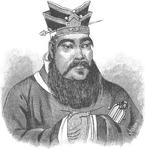Imperial Administration and Legal Systems
Chinese government contrasted the belief system of Legalism and the religious views of Confucianism
Works Cited
Mr. Compton
"Confucianism." Wikipedia. Wikimedia Foundation, 11 Aug. 2012. Web. 08 Nov. 2012. <http://en.wikipedia.org/wiki/Confucianism>.
"Google Images." Google Images. N.p., n.d. Web. 08 Nov. 2012. <http://www.google.com/imgres?um=1>.
Strayer, Robert W. "The Classical Era in World History." Ways of the World: A Global History. N.p.: n.p., n.d. 158-63. Print.
Strayer, Robert W. "The Classical Era in World History." Ways of the World: A Global History. N.p.: n.p., n.d. 192-95. Print.
"Confucianism." Wikipedia. Wikimedia Foundation, 11 Aug. 2012. Web. 08 Nov. 2012. <http://en.wikipedia.org/wiki/Confucianism>.
"Google Images." Google Images. N.p., n.d. Web. 08 Nov. 2012. <http://www.google.com/imgres?um=1>.
Strayer, Robert W. "The Classical Era in World History." Ways of the World: A Global History. N.p.: n.p., n.d. 158-63. Print.
Strayer, Robert W. "The Classical Era in World History." Ways of the World: A Global History. N.p.: n.p., n.d. 192-95. Print.

